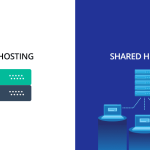When it comes to web development and server management, the .htaccess file is a powerful tool that often goes unnoticed. This small but mighty file plays a critical role in the configuration of Apache web servers, providing developers and administrators with a way to control and customize server behavior without altering core server files. In this blog, we’ll explore what the .htaccess file is, how it works, and why it’s so important for web development.
What is .htaccess?
The .htaccess file is a configuration file used by the Apache web server to manage various aspects of a website’s operation. The term .htaccess stands for "hypertext access," reflecting its primary function of controlling access and permissions on the server.
This file is typically located in the root directory of a website, but it can also be placed in any directory where you want to apply specific rules. When a browser requests a file from the server, Apache checks the .htaccess file to determine how to handle the request.
Key Functions of .htaccess
The .htaccess file offers a wide range of capabilities that can be crucial for optimizing website performance, enhancing security, and improving user experience. Here are some of the most common and important uses of .htaccess:
1. URL Rewriting
One of the most popular uses of .htaccess is to rewrite URLs. Clean, user-friendly URLs are essential for both SEO and user experience. Instead of showing a complex URL like example.com/index.php?id=123, you can use .htaccess to rewrite it to a more readable form, such as example.com/product/123.
Example:
RewriteEngine On
RewriteRule ^product/([0-9]+)$ /index.php?id=$1 [L]
2. Redirects
Redirects are essential for maintaining SEO rankings when content moves to a new URL. With .htaccess, you can set up 301 (permanent) or 302 (temporary) redirects to guide visitors from old URLs to new ones.
Example:
Redirect 301 /old-page.html /new-page.html
3. Access Control
Controlling access to certain parts of your website is vital for security. .htaccess allows you to restrict access based on IP addresses, password-protect directories, or deny access to specific files.
Example:
# Restrict access to a specific IP
Order Deny,Allow
Deny from all
Allow from 192.168.1.100
4. Custom Error Pages
A good user experience includes informative and well-designed error pages. With .htaccess, you can create custom error pages for 404 (Not Found), 403 (Forbidden), 500 (Internal Server Error), and other HTTP status codes.
Example:
ErrorDocument 404 /custom-404.html
5. Cache Control
Optimizing website performance is crucial, and caching is a key component of this. The .htaccess file allows you to specify caching rules, telling browsers how long they should cache different types of files, which can significantly reduce load times for returning visitors.
Example:
<IfModule mod_expires.c>
ExpiresActive On
ExpiresByType image/jpg "access plus 1 year"
ExpiresByType text/css "access plus 1 month"
</IfModule>
6. Compression
To speed up your website, you can use .htaccess to enable Gzip compression, which reduces the size of HTML, CSS, and JavaScript files sent from the server to the browser.
Example:
<IfModule mod_deflate.c>
AddOutputFilterByType DEFLATE text/html text/plain text/xml text/css text/javascript application/javascript
</IfModule>
7. Hotlink Protection
Hotlinking is when other websites directly link to the images or resources on your site, using your bandwidth without permission. The .htaccess file can help prevent this by blocking external sites from linking to your files.
Example:
RewriteEngine On
RewriteCond %{HTTP_REFERER} !^$
RewriteCond %{HTTP_REFERER} !^https?://(www\.)?yourdomain.com/ [NC]
RewriteRule \.(jpg|jpeg|png|gif)$ - [F]
Why .htaccess is Important
The .htaccess file is a critical component in web development for several reasons:
1. Flexibility
.htaccess provides a flexible way to make server-side changes without needing root access or the ability to modify the main server configuration files. This is particularly useful for shared hosting environments where users have limited control over the server.
2. Security
By controlling access to certain files and directories, .htaccess plays a crucial role in securing your website. It can prevent unauthorized users from accessing sensitive parts of your site, mitigate the risk of hotlinking, and protect against common web attacks.
3. SEO and User Experience
URL rewriting, redirects, and custom error pages are all essential for improving both SEO and user experience. Clean URLs are more likely to rank higher in search engines, and well-handled redirects ensure that you don't lose traffic when moving content. Custom error pages keep users engaged even when they encounter a problem.
4. Performance Optimization
Caching and compression rules defined in .htaccess help optimize website performance by reducing server load and improving page load times. Faster websites lead to better user satisfaction and higher conversion rates.
Conclusion
The .htaccess file is a powerful tool that offers a wide range of capabilities for managing and optimizing your website. Whether you’re a seasoned developer or just getting started, understanding how to use .htaccess can greatly enhance your ability to control your website’s behavior, security, and performance. By leveraging the power of .htaccess, you can ensure that your website runs smoothly, securely, and efficiently, providing a better experience for both users and search engines alike.







